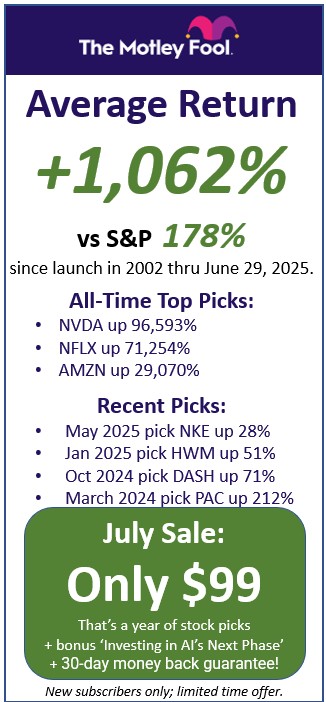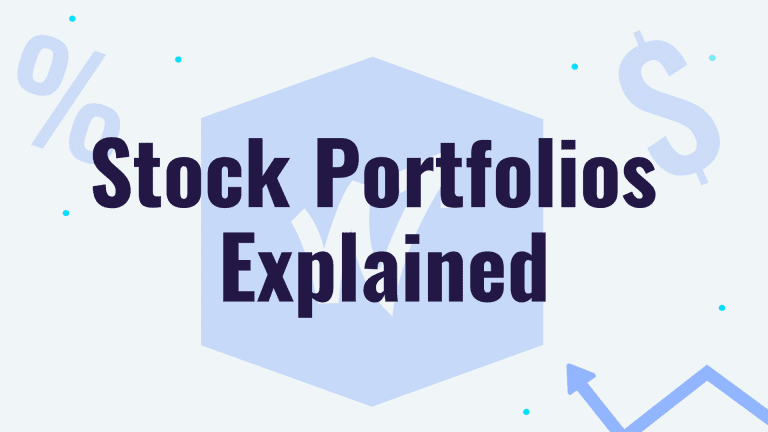Stock portfolios sound intimidating, but really, a stock portfolio is a lot like a picnic. You need lots of flavors, but with the right mix, the ingredients compliment each other to create a well-balanced meal.
Okay, maybe not my most profound simile, but you get the point…
Stock Portfolios Intro
If you’ve been keeping up with the latest Wall Street Survivor articles and videos, then you know a lot of the basics surrounding stock selection and investing strategies.
Now, it’s time to put that knowledge into practice by learning how to structure your very own portfolio!
Before we begin talking about stock portfolios, we should start with a very important reminder. One of the most important things to remember on your investing journey, is that you should not invest any money that you aren’t willing to lose.
Yes, the stock market returns around 7 to 8 percent a year on average (accounting for inflation); and yes, you can definitely make money through investing.
But at the end of the day, the stock market has crashed, companies have gone bankrupt, and even the best investors have lost large amounts of money.
So, before you decide to put your hard-earned money into the stock market, it’s important to accept the fact that you’re exposing yourself to real risk. If you aren’t comfortable with the amount of money you have in the market, it might be time to reassess your portfolio. It’s better to withdraw some money or make your portfolio a little safer than to live in constant worry about your cash and risk falling into emotional investing.
Okay, I’ll get off my soapbox. Now, let’s get to the fun part!
The First Step
The first step of building a successful portfolio is to think about what your goals are.
- Are you investing to be able to buy a house?
- For retirement?
- For your future family?
- How far away are these goals?
- How much risk are you willing to take?
These are all important considerations when deciding what your portfolio should look like.
After taking a look at your goals, it’s time to figure out your risk tolerance.
Risk tolerance will vary from person to person since it’s a subjective measure of how much volatility you can handle in your portfolio. Your risk tolerance will change depending on factors such as your age, your level of comfort in volatile times, and your financial goals.
Generally speaking, investors who are younger, are more comfortable with market swings, or have big goals that are decades away tend to have a higher risk tolerance, while investors who are older, are less comfortable with market swings, or are closer to their financial goals such as retirement tend to have a lower risk tolerance.
What’s Next?
Now that you know what your personal risk tolerance is, it’s time to put your goals into a real-life portfolio structured to match your individual needs.
As a general rule, investors with higher risk tolerances will put their money into portfolios that are made up mostly of equities (like stocks and stock ETFs) with little fixed income securities or cash.
Investors with lower risk tolerances will have portfolios containing more fixed income securities (like bonds and bond ETFs) while focusing less on equities.
So, once we know what the overall asset class balance of our portfolio should be, how do we know what specific securities to put into it? Well, let’s dive a little deeper into the asset classes.
Let’s start with equities.
Stocks with large market capitalizations (like blue-chip stocks), stocks in sectors that are historically reliable like food and utilities, and domestic (U.S.) stocks are considered less risky, so you might find them in the portfolio of someone with a low risk tolerance.
Small-cap stocks with shorter track records, stocks in more volatile industries like energy and financials, and foreign stocks tend to be riskier, so you’re more likely to find those in the portfolio of someone with a higher risk tolerance.
Now, let’s move on to fixed income.
Some of the big risk factors in fixed income are the length and type of debt being used.
Bonds with a shorter duration and bonds coming from the government are seen as the less risky side of fixed income. In fact, U.S. Treasury bond yields are used as the “risk-free” rate in financial models because they’re considered to be completely reliable.
But bonds with longer durations and bonds for corporations are considered riskier. Corporate bonds are even rated by how creditworthy and how reliable they are. The lower the rating, the riskier the bond.
Now that we’ve gone over what’s considered risky for each of the main asset classes, let’s run through a few examples.
Examples of Stock Portfolios
Let’s walk through some examples to help us think about how we would build a portfolio in different situations.
Example 1
Emily is a 22-year-old college graduate who just graduated with no student loan debt. She is single with no children. She has a stable, well-paying job and is investing for her retirement, which she predicts is 40 years down the road. At her age, she is very comfortable with big swings in the market and will keep her cool if things go south for a little while. What do you think Emily’s portfolio will look like?
It’s safe to assume that Emily has a very high risk tolerance, so her portfolio will be much more on the riskier side. Her portfolio might be made up of 70% stocks and 30% bonds. Her equites will probably contain more small-cap stocks and foreign market or emerging market funds, as well as stocks in riskier sectors such as innovative technology. Emily’s portfolio is what we would call “aggressive”.
Example 2
Now, Rob is a 50-year-old father of two. He has a mortgage on his house and is five years away from retirement. One of his kids will be starting college in less than ten years, and he is pretty sensitive to big market swings. What do you think his portfolio will look like?
Rob has a relatively low risk tolerance. Since he is a little bit older and has some big financial events coming up in the next decade, he won’t want to bet a lot of money on the market; he’ll want to stay in less risky investments so that he can make a modest return on his money without worrying about exposing himself to big losses this close to his goals. Rob’s portfolio might have 40% stocks and 60% bonds, a setup we would call “conservative” or “moderately conservative”. His equities would be well-known, domestic, large-cap stocks in safer, more reliable market sectors.
One Last Thing…
Now that we have the basics of portfolio construction down, there’s just one more thing we should talk about: rebalancing. Once you’ve built your portfolio and let it do its thing, you have to make sure it doesn’t get too out of balance. You can buy and sell stocks that are under- and overweight in your portfolio using a method known as rebalancing.
For example, if your portfolio is made up of 70% stocks and your stocks have a great quarter, they might now make up 75% of your portfolio. If you wanted to maintain the structure of your portfolio, you would sell off some of your stocks to get them back to 70% and redistribute that money into your investments to maintain that balance. If you’re feeling good about those stocks that are winning and you want to let them run, then that’s an option, too. But if you want to lock in some of those gains and stay true to your risk tolerance in order to avoid emotional investing, then rebalancing is the way to go!
Hopefully, this article helped you learn how to take the knowledge you’ve been gaining and put it into a real-life investing strategy. We’re so happy you’ve decided to make Wall Street Survivor part of your investing journey, and we can’t wait to keep creating content to help you out along the way. So, what are you waiting for? Get out there and invest!
Looking for more tips on the investing basics? Check out our articles on dollar cost averaging and when to sell stocks!
FIRST STEPS TO FINANCIAL SUCCESS:
At WallStreetSurvivor, we love with the stock market and we are obsessed with finding the best deals to help us all make more money. Here is our list of the BEST STOCK SERVICES to help you get start investing correctly:
1 - Get Up To $1,000 in FREE Stock with Robinhood! The fastest growing brokerage, Robinhood, just hit 10,000,000 accounts. Why? Because they DON'T charge commission AND they are giving away up to $1,000 in free stock when you open an account. CLICK HERE to learn more about Robinhood.
2 - Not Sure What Stocks to Buy? Get the BEST Stocks Picks! We subscribe to dozens of stock newsletters, and there is one that has outperformed all the rest for the last 5 years. This one service has an amazing average return of 74.63% on ALL of their stock picks the last 3 years. Their recent winners have been stocks like Shopify (SHOP) up 866%, Match Group (MTCH) up 549%, Paycom (PAYC) up 235%, and many others that have doubled in the last 3 years.
CLICK the image below go see their latest offer...

3 - Don't Pay Commission! Open a Real Brokerage Account and Trade Commission-Free. Here's the GREAT NEWS--the brokerage industry is very competitive right now and some brokers are offering FREE COMMISSIONS and other incentives to acquire new accounts. CLICK HERE to get commission-free trades. Or CLICK HERE to get a review of the Best Online Stock Brokers.
4 - Get the Best Stock Picking Newsletter of 2020 We subscribe to dozens of stock newsletters. Some of these newsletters are longer term investing, some are short term, and some are penny stocks. Find the best newsletter for your interests. So which stock newsletters are the best? Visit our review of the best stock newsletters.
5 - Is the Motley Fool a Good Source of Stock Picks? The Motley Fool is probably the best know stock newsletter service. Is it worth it? Read our full Motley Fool Review
